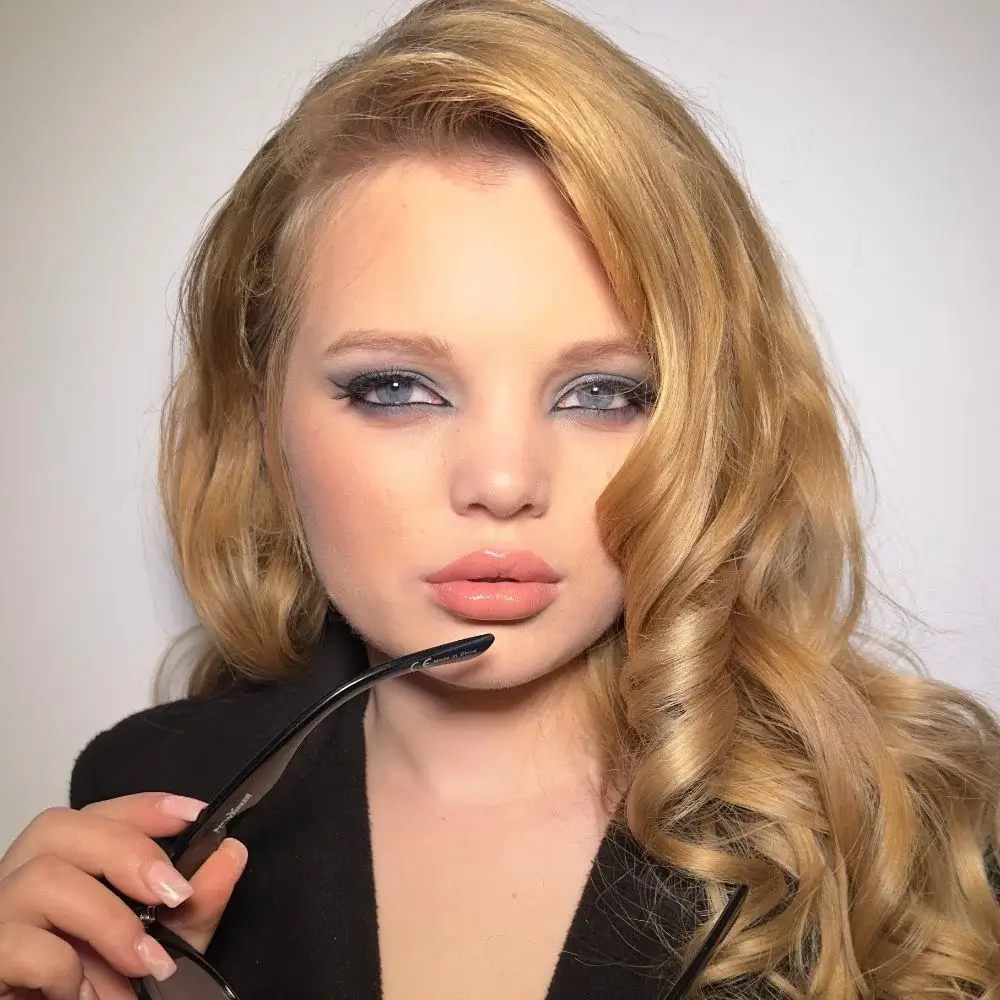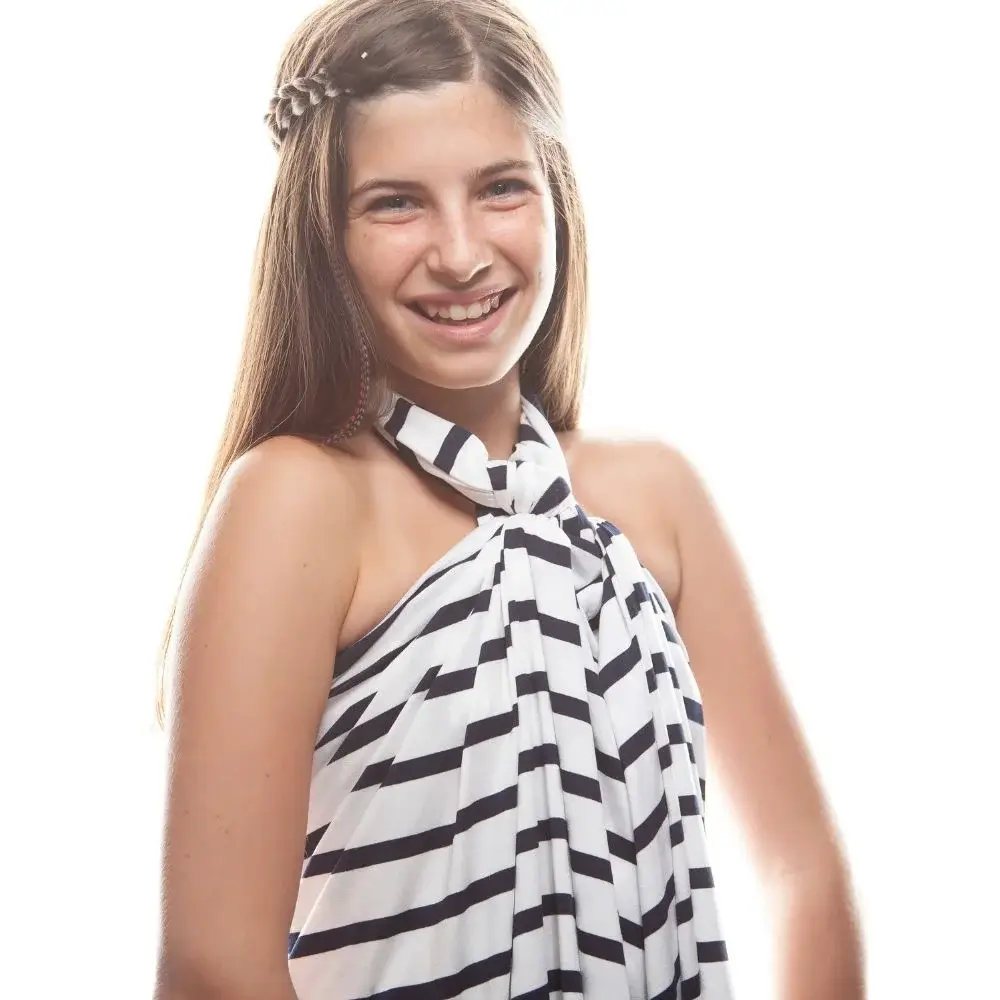Hair extensions are an excellent way to get that long, lush look you’ve always wanted. But with so many different hair extensions available, knowing which one is right for you can be challenging. Hand-tied extensions have recently become popular for those looking for a more natural look since they are less damaging than traditional extensions. In this blog post, we’ll explore hand-tied extensions, how they differ from other types, and help you decide if they’re a suitable option.
Firstly, let's break down what hand-tied extensions entail. They are made using 100% human Remy hair and carefully processed to maintain its natural texture and cuticles. The extensions are then weaved onto a row of cotton or silicon thread, which is then sewn onto your head, section by section. The reason it's called "hand-tied" is because each row is hand-sewn, making the attachment much more secure than other types of extensions.
One of the main differences between hand-tied extensions and other types, such as tape-in or clip-in extensions, is that hand-tied extensions require more skill to apply. Since the extensions are attached in rows, having the correct placement is vital to make them look natural. The application process can take longer than other types, but the results make it worth it.
Another distinct advantage hand-tied extensions have over other extensions is that they're incredibly versatile. Because they're attached in rows that sit flat on your head, you can wear your hair in ponytails, braids, updos, or other styles without worrying about visible tracks. And because each row is around 1-1.5 inches thick, you can customize the look to your liking, from a more natural-looking volume boost to full, luxurious length.
When it comes to maintenance, hand-tied extensions require more care than other types of extensions. You must take extra care when washing and styling your hair to ensure the extensions stay secure and don't damage your natural locks. However, because they are made from human Remy hair, they can last anywhere from six months to a year, depending on how well you care for them.
Finally, hand-tied extensions are more expensive than other types, but their longevity makes them one of the most cost-effective hair extensions available. Since they don't require constant maintenance or replacements, you may save money in the long run by going for hand-tied extensions.
Hand-tied extensions are a relatively new type of extension gaining popularity. They offer a more natural, versatile, and secure option than other hair extensions. They may require more maintenance, time, and money, but the results are worth it for a gorgeous, natural-looking head of hair you'll love. If you're considering getting extensions, we recommend giving hand-tied extensions a try to see if they're the right choice.
Say goodbye to bad hair days with our top pick for the best shampoo for hand-tied extensions! Our expert team has scoured the market to bring you the ultimate solution for maintaining the health and longevity of your beloved extensions. Our top recommendation not only cleanses your hair strands but also nourishes and fortifies the hair from the inside out. No more pesky tangles or damage, just luxurious locks that last longer than ever before. Don't settle for less; click the link and discover your new holy grail shampoo today!
What is the recommended frequency for washing hand-tied hair extensions?
The recommended washing frequency for hand-tied hair extensions typically falls within the range of every 7 to 10 days. However, it's important to note that this can vary depending on your hair type, lifestyle, and the specific products you use. Striking the right balance is critical: overwashing can strip your extensions and scalp of essential natural oils, potentially causing dryness, while infrequent washing may lead to the buildup of oils and products, making your hair heavy and harder to manage. Therefore, adjusting your washing routine according to your needs is advisable.

What role does sulfate-free shampoo play in maintaining hand-tied extensions?
Sulfate-free shampoo is vital in preserving the integrity and lifespan of your hand-tied hair extensions. Unlike shampoos containing sulfates, which can be harsh and abrasive, sulfate-free alternatives are gentler on your natural hair and the extensions. This gentleness is crucial because harsh sulfates can weaken the bonds holding your extensions in place, potentially leading to premature shedding. By opting for sulfate-free shampoos, you ensure that your extensions remain in optimal condition, free from damage caused by harsh chemicals.

What are the benefits of moisturizing shampoo for hand-tied extensions?
Utilizing a moisturizing shampoo for your hand-tied extensions offers a multitude of benefits:
- It helps maintain proper hydration, preventing dryness and tangling, common issues with extensions.
- Moisturizing shampoos contribute to your hair's overall softness and manageability, ensuring that your natural locks and extensions remain silky and easy to style.
- They can help combat frizz, static, and other common hair problems, enhancing the overall aesthetic appeal of your hair.

How do I gently massage my scalp and extensions while shampooing?
To ensure the longevity of your extensions, it's crucial to adopt a gentle approach when massaging your scalp and extensions during shampooing. Begin using your fingertips rather than your nails to massage your scalp in a circular, gentle motion. Avoid excessive pulling or tugging on the extensions, as this can place unnecessary stress on the bonds and potentially lead to premature shedding. When distributing shampoo through the length of your extensions, employ a light touch, moving from the roots down to the tips. The goal is to achieve an even shampoo distribution without resorting to vigorous scrubbing or harsh handling.

How can I create a suitable dilution for the shampoo when washing extensions?
Creating an appropriate shampoo dilution for washing your extensions involves mixing a small amount of your sulfate-free shampoo with water. This diluted solution serves several purposes: it provides a gentler cleanse, reducing the risk of over-cleansing or overloading your hair and extensions with the product. To get started, a 1:1 ratio of shampoo to water is a good baseline, but feel free to adjust this ratio based on your unique requirements and preferences. The key is to find a balance that effectively cleanses your hair while preserving its health and the longevity of your extensions.
Should I rotate between different shampoos to prevent product buildup?
Yes, rotating between two sulfate-free shampoos is a wise practice when caring for your hand-tied hair extensions. This approach offers several advantages. Firstly, it helps prevent the accumulation of product residues in your hair and extensions, ensuring they remain fresh, clean, and free from buildup. Secondly, switching between shampoos can prevent your hair from becoming overly accustomed to a single product, which might lead to diminished effectiveness over time. By incorporating different shampoos into your routine, you can maintain the best possible care for your extensions, taking advantage of diverse formulations and ensuring their ongoing health and vibrancy.







